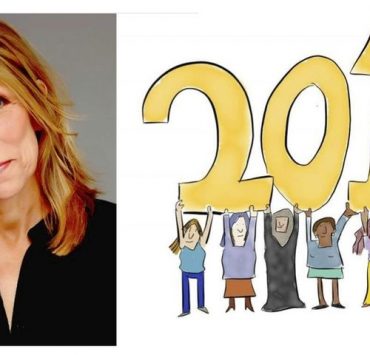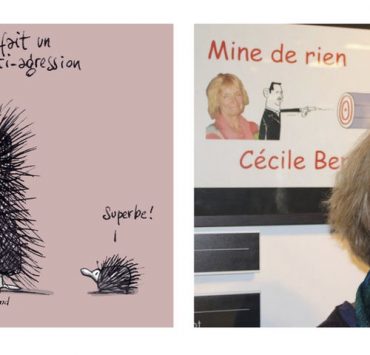Free speech : Liza Donnelly is dedicating 2018 to the rights of women.
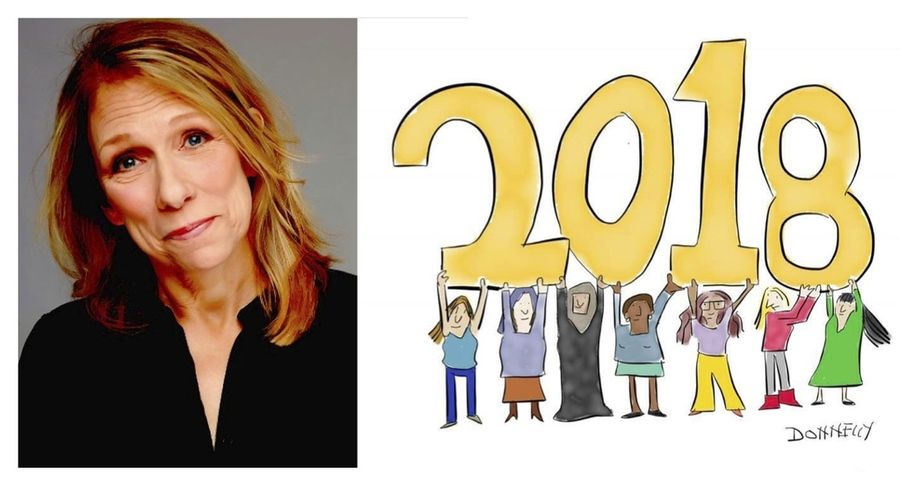
Trump claims to love women, but many American women are gritting their teeth. For New York cartoonist Liza Donnelly, respect for the rights of women is not just a legal matter, but above all a question of culture.
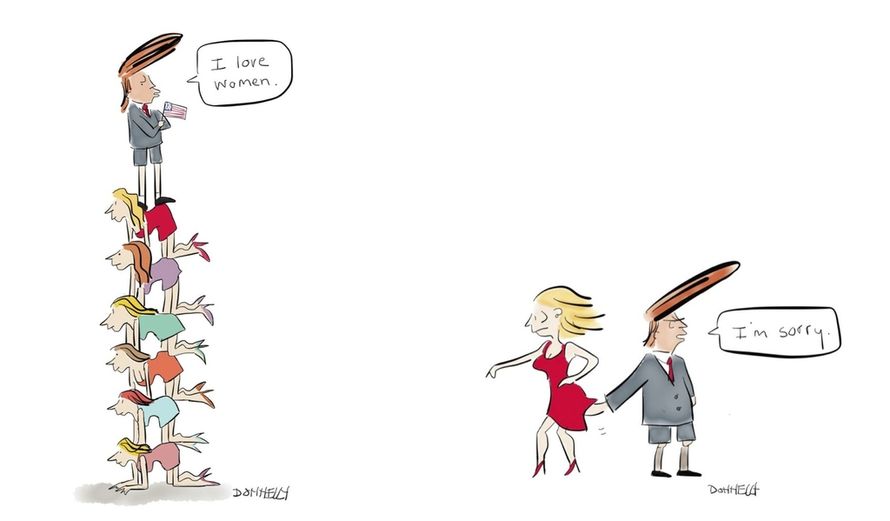
« WITHOUT RIGHTS THERE IS NO FREEDOM OF EXPRESSION; WITHOUT FREEDOM OF EXPRESSION THERE ARE NO RIGHTS » LIZA DONNELLY
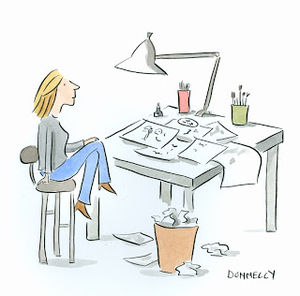
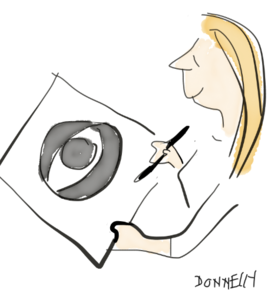
Liza Donnelly grew up in Washington during the Civil Rights Movement, the Watergate hearings, and the early feminist movement. Feminist militant, speaker, curator, author of sixteen books including Funny Ladies and Sex and Sensibility, her cartoons appear regularly in many newspapers and magazines including The New Yorker. She invented a new form of journalism by drawing directly onto her tablet for CBS News, Medium, NBC… for whom she produced live coverage of the 2017 U.S. presidential election. She is a member of the international organization Cartooning for Peace.
Humorous drawing is, for her, a universal means of communicating throughout the world, across frontiers. It starts with an idea which is born from observing the world, reading the paper or browsing the internet. Cartoonists, she says, are like sponges, taking in people, their obsessions and their behaviour, and recreating them on their drawing boards. Drawing is like directing a show; image and words have to be perfectly choreographed in order for the drawing to become a timeless work of art.
Liza Donnelly draws to bring about change.
Liza Donnelly agreed to answer a few questions for Le Crayon, and we thank her warmly.
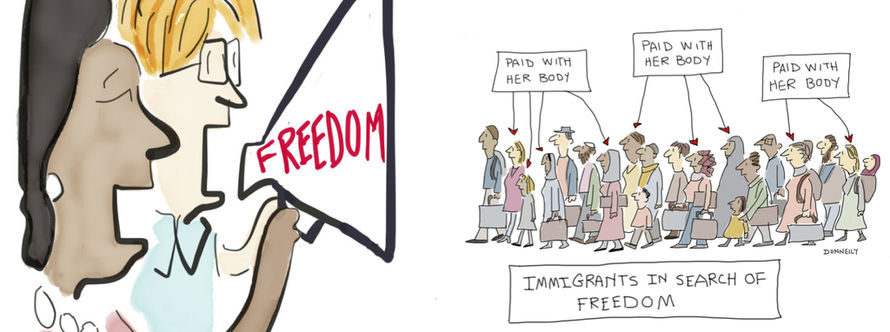
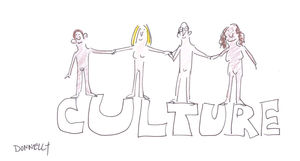
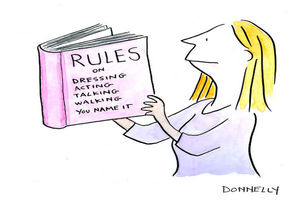 Bruno Caïetti for Le Crayon – You are one of the most famous and best-known press cartoonists in the world; for you, what is the function —or maybe the mission— of cartoons?
Bruno Caïetti for Le Crayon – You are one of the most famous and best-known press cartoonists in the world; for you, what is the function —or maybe the mission— of cartoons?
Liza Donnelly – I see political cartoons as a form of communication. On the one hand, they serve a purpose to expose corruption, injustice in the world, shed light on the wrongs of government leaders and cultural habits. But cartoons also can be a form of dialogue between people, a discussion of issues that are important and about which there might be disagreement. Of course one purpose is to bring smiles and laughter to people sometimes – although not always.
B. C. – The 2018 exhibition of Le Crayon is devoted to the rights of women: as a person who travels a lot and knows the international scene, does it surprise you that in France, self-proclaimed “country of human rights », we feel the need to organize this kind of exhibition?
Liza Donnelly – Not at all! The most liberal countries still have problems with equal rights for women, including the United States. This is because while a country may have equality laws, it is the culture too that must change. And that takes a long time. Cartoons can help people grasp the need for change. Cartoons point out the silly things people do to others, and expose bad behavior with laughter sometimes.
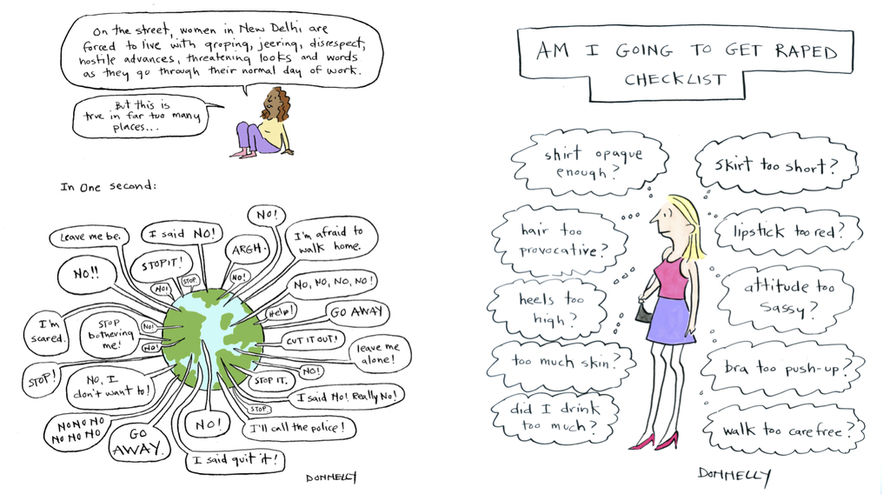
B. C. – How is the situation in the United States concerning women’s rights; and how do you reflect it, or confront it, as a cartoonist?
Liza Donnelly – The situation for women’s rights is good in the US, but could be better, of course.
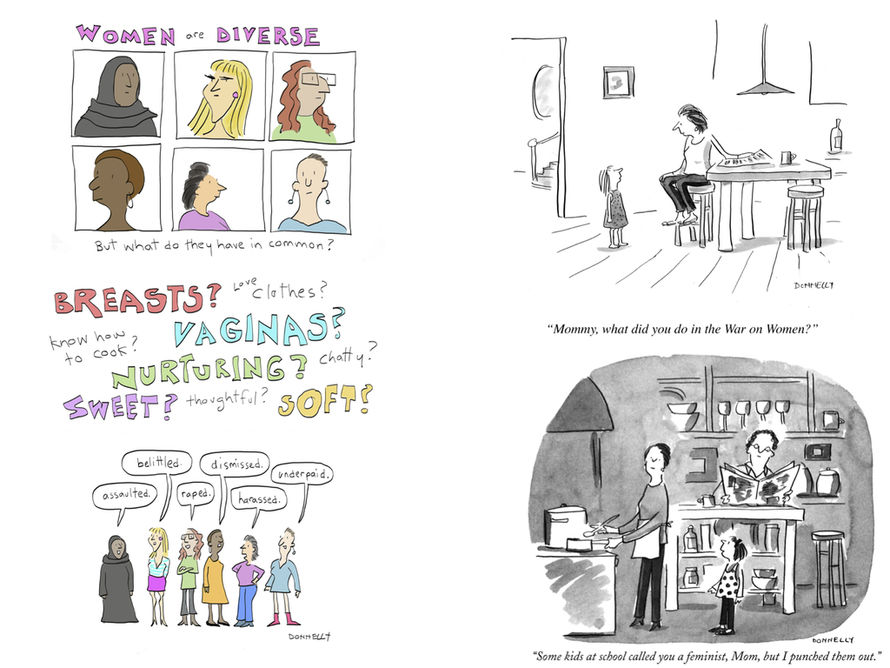
We do not have enough women in powerful government positions, but that may be changing this year because many women are running for office. There is still pay inequality, and a lot of sexual harassment and rape and we are trying as a country to lower those cases. As I said before, change not only needs to happen in legislation and pay rates, but in cultural attitudes.
People in their personal and professional lives need to start treating women as equal. As Hillary Clinton famously said in 1995 at the UN World Conference on Women in China, “Women’s rights are human rights and human rights are women’s rights, once and for all.”
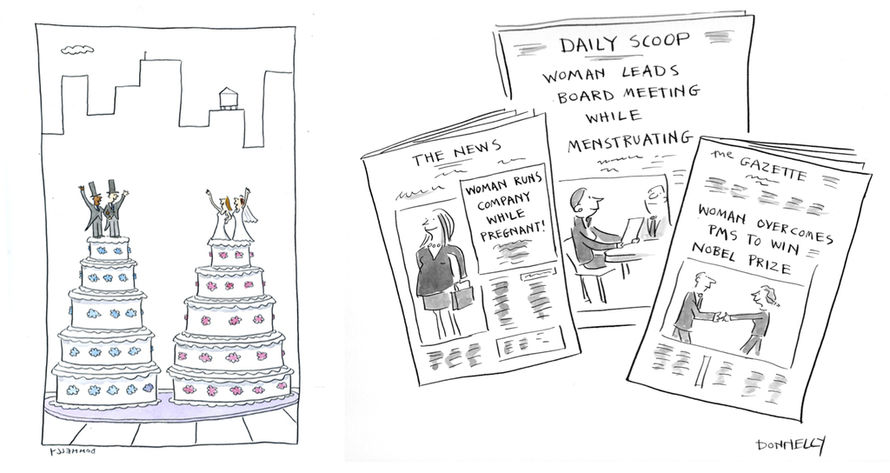
B. C. – Our exhibition brings together female cartoonists from all around the world. As you are really a specialist on the subject, what would you say sets apart female cartoonists from male cartoonists ? (in sense of humor, treatment of subjects, etc.)
Liza Donnelly – Cartoonists are cartoonists, and whether you are a man or a woman makes little difference. Women do not draw differently from men, they do not have a different approach, and women do not all draw the same way nor do they think the same way. Women are diverse. The one thing women can bring to the table as women is experience at being a woman.
Men can’t do that (but transgender men could bring an interesting view). Male cartoonists can and should draw cartoons about women’s rights. But only women can draw feminist cartoons from the point of view of being a woman. We need all viewpoints!

B. C. – Lastly, cartooning, and in particular drawing for the press, needs a total freedom of expression to thrive. With your extensive experience, would you say that the freedom of expression has increased or decreased? And how do you see the future of it?
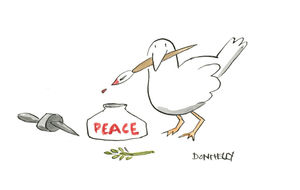
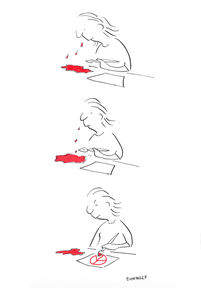 Liza Donnelly – I think in countries like France and the U.S., it is the same, freedom of expression has not decreased or increased.
Liza Donnelly – I think in countries like France and the U.S., it is the same, freedom of expression has not decreased or increased.
As you know, lately we’ve had some challenges in that regard in cartooning, but I see those as learning times.
As difficult– and sadly deadly– as they were, they were important to go through. But certainly in individual countries with dictatorships, it has decreased.
The Internet makes it harder for such governments to keep people quiet, and that’s good. I think the future of freedom of expression is good!
Interview conducted by Bruno CAÏETTI
Liza Donnelly is a member of the International Committee of Cartoonists who has joined our project of a touring exhibition : “The sharp end of the pencil : women’s rights! Exhibition of Caricatures, political cartoons and freedom of expression” which Le Crayon is organizing for 2018 in partnership with France-Cartoons and the Festival du Dessin de Presse et de la Caricature de l’ Estaque (FIDEP).
LIZA DONNELLY key dates :
1979 : Sells her first drawing to The New Yorker.
2005 : Publication of her book Funny Ladies to the timeline (2005) (a history of women cartoonists.) The same year, at the time of the affair of the Muhammed cartoons, she addresses the United Nations on behalf of Cartooning for Peace.
2012 : Represents the US Department of State in Palestine and Israel, to discuss the political impact of cartoons as an instrument for peace.
2014 : Publication of her book, Cartoon Marriage.
2016 : Joins the CBS News team.
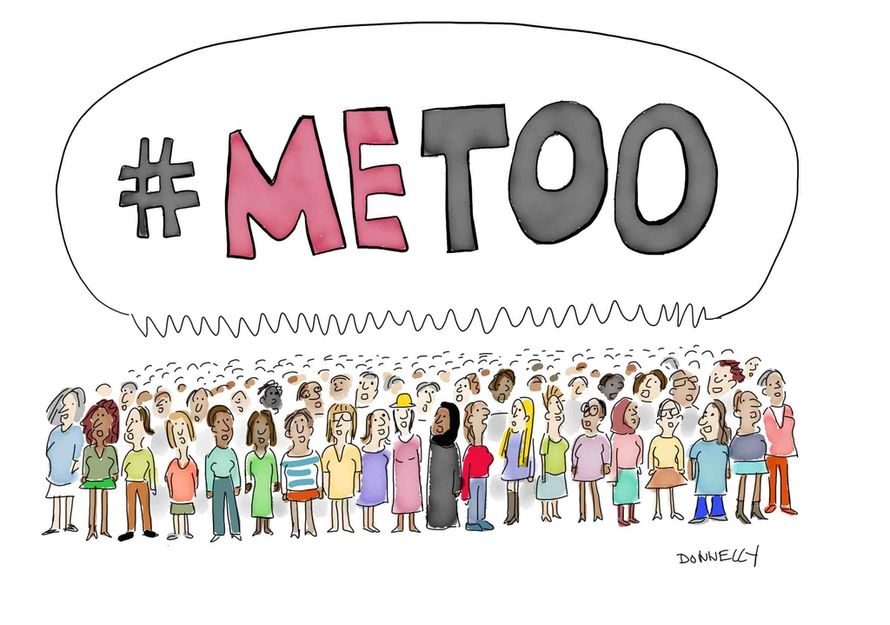
Also In the « Free speech » section :
– Il était une fois Samya Arabi.
– Samya Arabi ou la graine de l’espoir.
– Le dessinateur Pierre Ballouhey.
– Smitha Bhandare Kamat, engagée et inspirée : Quand Liberté d’expression rime avec compassion !
– Smitha Bhandare Kamat, committed and inspired : When freedom of expression rhymes with compassion !
– मुक्त संवादः स्मिता भांडारे कामत, बांदिलकी आनी उर्बा आशिल्ली व्यंगचित्रकारः जंय व्यक्तीस्वातंत्र्याक मेळटा करूणेची जोड!
– Cécile Bertrand Un humour qui frappe toujours au centre de sa cible.
– Camille Besse vous souhaite « ni Dieu nichon! »
– Marie-Thérèse Besson, Grande Maîtresse de la Grande Loge Féminine de France.
– Angel Boligan, le dessinateur de presse qui aurait voulu signer Guernica.
– Le dessinateur Fathy Bourayou.
– « Green is good » pour le journaliste indépendant Bruno Caïetti
– Cambon ou l’art de la pandémie.
– La caricaturiste Cristina s’engage pour les doits des femmes
– A cartunista Cristina Sampaio em defesa dos direitos da mulher
– Liza Donnelly place 2018 sous le signe des droits des femmes.
– Liza Donnelly is dedicating 2018 to the rights of women.
– Faujour, « le Pitbull du dessin de presse. »
– Il était une fois à Nuit Debout : le Groupe Cachan.
– Saad Hajo, dessinateur syrien en exil.
– Le Théâtre, c’est la liberté d’expression la plus aboutie ! Flore Hofmann, metteur en scène, nous en parle avec passion.
– Le F.N. au bout du crayon de Jiho.
– Nadia Khiari, alias Willis from Tunis.
– Nadia Khiari et son chat Willis, l’ardeur au service des femmes et de la liberté d’expression.
– Le réalisateur Olivier Malvoisin.
– Stéphane Manier de Reporters sans Frontières.
– Richard Martin, le seigneur du Toursky.
– Un trait pour faire bouger les lignes ! À la rencontre de Mitu, la caricaturiste bangladaise.
– Draw to move the rows ! Meet Mitu, the cartoonist from Bangladesh !
– Gustave Parking, le clown poète
– Picha, l’interview, ou comment rire de tout (Une vidéo du Crayon)
– Le F.N. au bout du crayon du caricaturiste Placide.
– Kianoush Ramezani, un homme libre.
– Bernard Rodenstein, le chemin de la fraternité
– Le caricaturiste Jean-Michel Renault confronté à l’affront national.
– Trax, la Pasionaria du dessin de presse.
– La caricaturiste Trax bouscule les conventions !
– Fawzia Zouari, un Islam éclairé.

